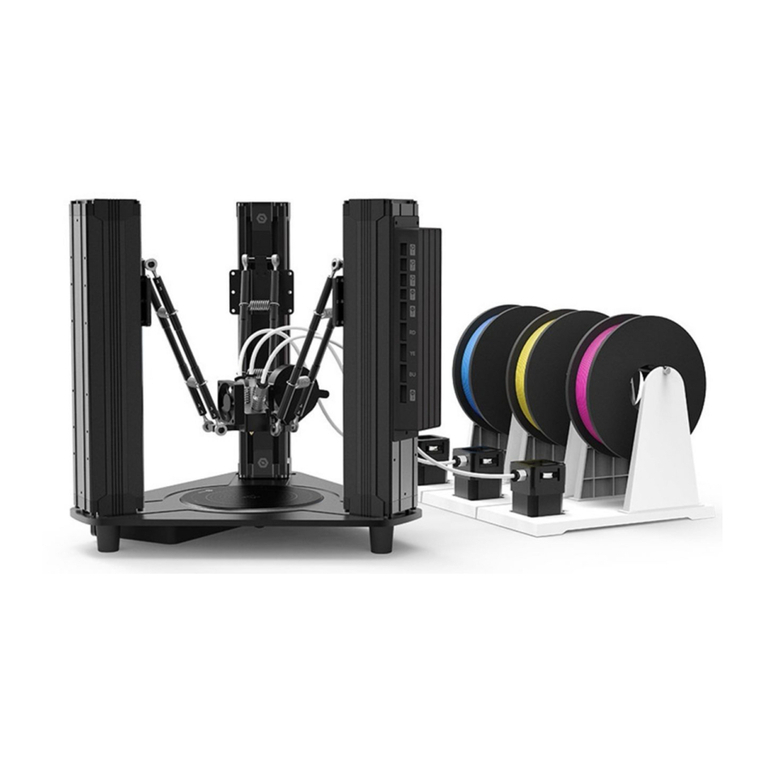
4
II 3D Printing
Please follow the guide of the machine to record three different points to define a plane parallel to the heated bed, these three points must
be recorded in order with nozzle in the areas shown in the drawing below, one in each. The calibration requires to be set only for the first use.
2.1 3-Point Leveling-Manual levelling
Warning: Make sure that the cables are plugged in place before power-on! Hot-plug will cause malfunction!
A4 paper
Heated bed
Place a piece of A4 paper
on the heated bed
Press the “Entrance to
3-point leveling interface” button
Press the “3-point leveling mode
initiate/Point recording” button to
record Point ①, the nozzle will
automatically go to a position right
above Point ② after successful recording
Do the same height adjusting and point
recording steps to record Point ② and ③.
After successful leveling, the machine will
home again and exit 3-point leveling mode
Press the “-Z” button to get the nozzle
closer to the heated bed, and move the A4
paper back and forth at the same time. Stop
just when the paper can slip with slight friction
Press the “3-point leveling mode initiate/Point
recording” button to enter 3-point leveling
mode, and the nozzle will automatically
go to a position right above Point ①
3
1 2
校准
自动 手动 零点
Leveling
Z2: 20Z1: 20 Z3: 20
Switch Points
Please place the calibration card between
the nozzle and heated bed!
Press the “-Z/+Z” buttons to adjust the
height and move the calibration card back
and forth until you can detect slight
friction. And then switch to the next Point!
Leveling
Z2: 20Z1: 20 Z3: 20
Switch Points
Please place the calibration card between
the nozzle and heated bed!
Press the “-Z/+Z” buttons to adjust the
height and move the calibration card back
and forth until you can detect slight
friction. And then switch to the next Point!
Leveling
Z2: 20Z1: 20 Z3: 20
Switch Points
Please place the calibration card between
the nozzle and heated bed!
Press the “-Z/+Z” buttons to adjust the
height and move the calibration card back
and forth until you can detect slight
friction. And then switch to the next Point!
Leveling
Z2: 20Z1: 20 Z3: 20
Switch Points
Please place the calibration card between
the nozzle and heated bed!
Press the “-Z/+Z” buttons to adjust the
height and move the calibration card back
and forth until you can detect slight
friction. And then switch to the next Point!
校准
Auto Level Manual Level Zero Setting
Operation steps:
5. Friction status of the three points should be as uniform as possible. Pay attention when traveling the head downward, especially when the nozzle is getting too close to the bed.
Even though the height detect protection will take effect and force the machine to go 0.06mm each press, the heated bed may also get burnt if you continuously move it
downward without testing the height with a piece of paper.
4. The recorded points will not be lost after power-off. But, once entering 3-point leveling mode, previously recorded points will be cleared automatically.
3. Only Z coordinates will be recorded, so all you need to do is adjusting the height with a piece of paper.
2. 3-point leveling mode can only be entered with 3D printing head connected.
6. A re-assembled machine should be re-levelled.
Note: 1. Please access to www.dobot.cc to check for upgraded firmwares!




























